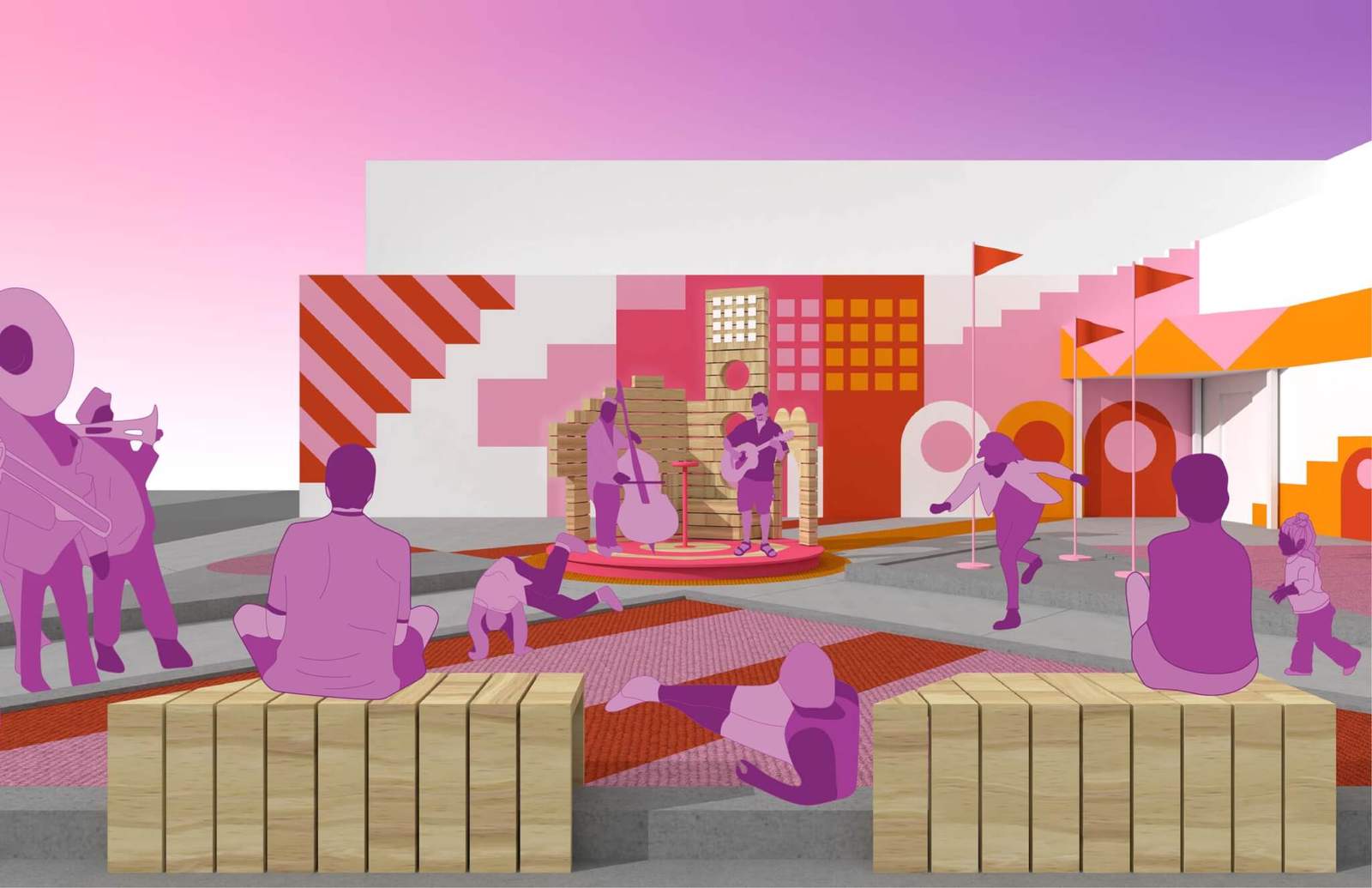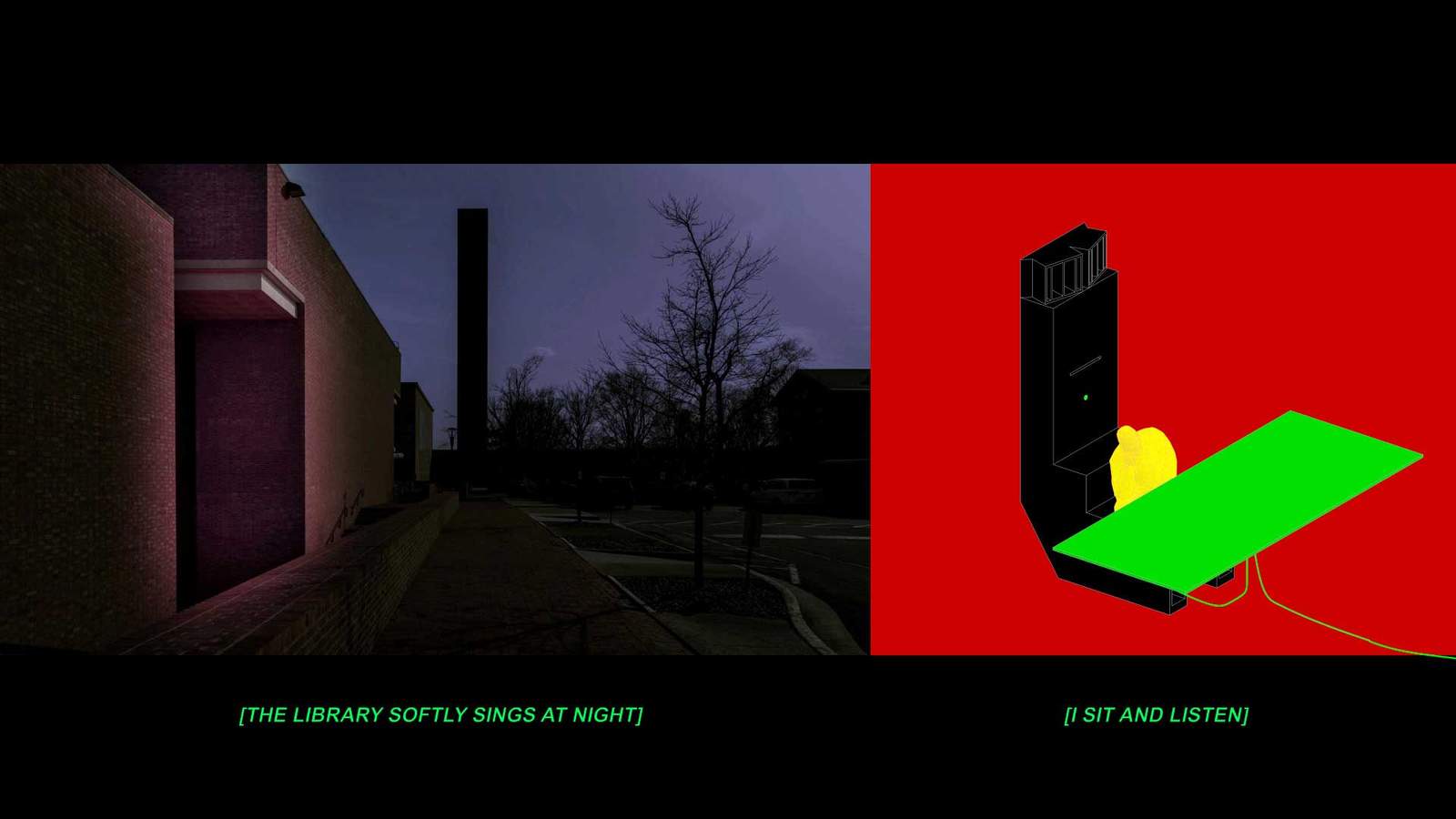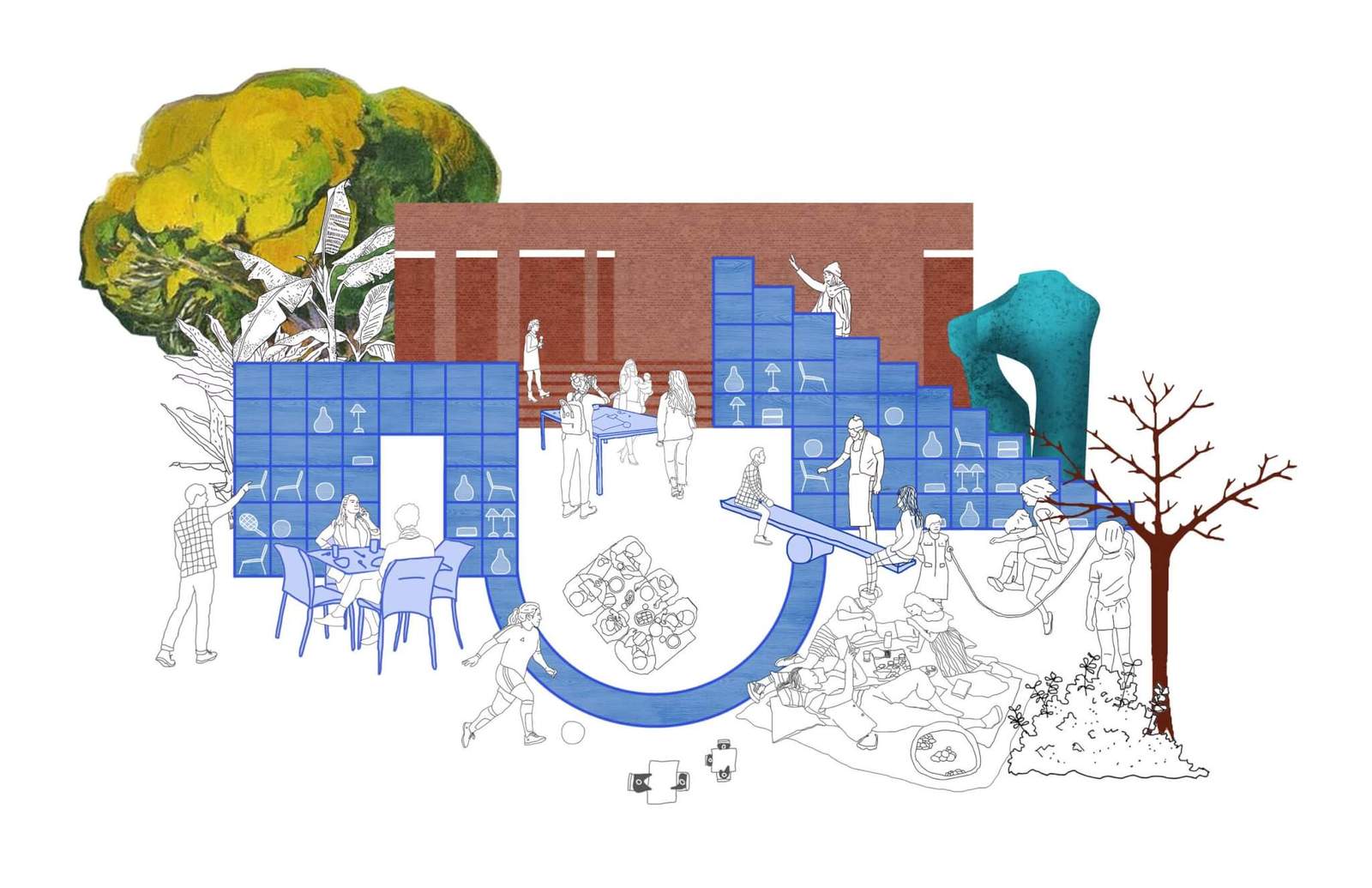Exhibit Columbus’ 2023 Winter Presentations offered the public a chance to comment on the upcoming round of installations
On February 25, Exhibit Columbus invited the participants of its 2022–23 cycle to present initial designs for the temporary installations that will augment the small but architecturally outsized Indiana town come the opening of the festival in August. The proposals presented were the results of a previous public-engagement process in 2022, when the design teams first came to Columbus to select their sites and meet the locals. In keeping with this cycle’s theme, Public by Design, the local community was invited yet again to hear out the presenters and weigh in on their proposals—and they came, and they weighed in. Hosted downtown at The Commons—a voluminous and airy Cesar Pelli–designed event and community center that features a large indoor playground and a cacophonous, kinetic sculpture Jean Tinguely called Chaos (it was turned off for the presentations)—the crowd was lively, the presenters articulate, and exchange between the two gave a glimmer of what public participation in the design process could be.
The morning got started with comments from Exhibit Columbus executive director Richard McCoy; a poetry reading by Indiana Poet Laureate Matthew Graham; and a presentation from Signals founder Chris Grimley, who did this year’s communication design. The first installation designer to speak was Vishaan Chakrabarti of New York City–based Practice for Architecture and Urbanism (PAU), one of four of this cycle’s Miller Prize winners, the other three being Studio Zewde, PORT, and Tatiana Bilbao ESTUDIO. There were also presentations by seven University Design Research Fellows and one by the local High School Design Team, which also had the opportunity to design a pavilion.


PAU’s proposal, titled Interoculus, is a canopy with an oculus that piggybacks on existing light poles at the intersection of 4th and Washington streets. Inspired by “the Pantheon in Rome, carnival vernacular, ice cream sundaes from local establishment Zaharakos, and the wigwams of the Miami and Shawnee peoples,” it seeks to create a center in the street grid of downtown Columbus to be activated by the public during festivals and events. Chakrabarti also referenced the omphalos at Delphi, the Latin American Zocalo, and the bellybutton, which got the crowd to giggling.


Following, Molly Hunker and Greg Corso of Syracuse University presented Side Effects, a collection of brightly colored urban furniture that abuts the interior and exterior glass walls of The Commons. Inspired by the designs of Alexander Girard, the project embodies a “continuous” idea of public space that breaches the demarcation between inside and outside. Presented in solid colors, one audience member suggested using many contrasting colors, as Girard would have done, to which Hunker and Corso said, “yes, of course,” pointing out that their images were just sketches.
Next up was Joseph Altshuler and Zack Morrison of Could be Architecture, who presented Carousel for Columbus, a “locomotive love letter in the round” that will occupy an empty corner lot. Combining bright colors, supergraphics, and an actual carousel outfitted with building silhouettes—parroting Chakrabarti, Altshuler called it their project’s “bellybutton”—all sampled from local architecture. The installation promises to inject a good deal of fun to the festival come August, as well as a good deal of dizziness, as one audience member pointed out apprehensively, which, come to think of it, is a good metaphor for Columbus: you really can get spun around and dizzy looking this way and that to take in all of the architectural marvels the town has to offer.
University of Arkansas professor Charles Sharpless (who arrived without his Somewhere Studio partner Jessica Colangelo) told us about Ground Rules, an intervention under the pergola of the Kevin Roche–designed Cummins HQ. Made of reclaimed waste material, potentially lumber from a multi-family project Somewhere Studio is building in Dallas, the installation will provide a play space, maybe a bocce ball court, and will be painted in bright colors. One attendee said it reminded him of Romantic paintings of barbarian tents strung up in the shelter of Roman ruins.


Halina Steiner, Tamika Baba, Forbes Lipschitz, and Shelby Doyle—a consortium of academics from various schools throughout the Midwest—presented Pipe Up!, an installation slated to rise on the lawn of the Hotel Indigo. Selected because the site is at the junction between city and countryside, the installation—composed of sewer pipe, drainpipe, and flagging tape—is meant to call attention to the Midwest’s vast drainage infrastructure and the toxins it conveys down the Mississippi to the Gulf of Mexico. The community seemed to like it as a play space, though worried about the robustness of the plastic materials considering the beating local children will certainly give it.
Sarah Zewde of Studio Zewde showed Echoes of the Hill, a garden folly of sorts that will literally echo the hill of the auditorium in Mill Race Park, which was designed by Michael Van Valkenburgh and is now celebrating its 30th anniversary. Zewde’s installation creates a ghost image of the croissant-shaped mound with red frames. The echoing form closes a circle with the existing mound—yet another “bellybutton” and attempt to create a center among the group—and the hollow volume can be occupied and activated in any way the community sees fit. One community member asked if the frames would be strong enough to hang from.
Christopher Marcinkoski of PORT trotted out the Plot Project, an installation sited at the Mill Race Senior Center. The project extends the semi-circular form of the building out into the lawn that surrounds it, forming a 1,250-foot, segmented arch of varied indigenous plantings—12 garden (not funeral) plots in all—each delineated by six-foot bands of wildflowers. Survey poles at 25-foot intervals make the arch legible from the ground, while three covered seating structures offer places to chill and take it all in. The audience gushed over the proposal, though had pointed questions about what plantings would be used—Marcinkoski said they were figuring that out.


Purdue University professor Esteban García Bravo and his collaborator from Columbia, Maria Clara, laid it down with Prisma, an interactive and immersive light installation sited against a parking garage across from the Cummins HQ. The first of the installations to come alive at night, it forms an “open air tunnel” with several layers of light activity that grab attention, respond to human interaction, and animate according to programming prompts. Conceived as a venue for music, performances, and other art and culture it very much gave the vibe of Indian’s best outdoor disco, though one audience member did ask if there would be a roof for if it rained.
The High School Design Team stepped up next with Machi (Japanese for busy downtown area or Main Street), a hangout spot for teens, who don’t currently have anything of the sort in Columbus. Composed of steel tube pergolas, colorful awnings, and moveable furniture, the project offers a flexible and reconfigurable space for kicking it with your Fam. The high schoolers also discussed their marketing strategy (social media) and presented their budget (they’re under budget), which was a first for the presenters, a fact McCoy would go on to bring up again and again for the remainder of the day.


MIT professor Deborah Garcia, however, was not to be upstaged by the teens. Her project, Recordar, may have stolen the show. Sited in the courtyard of the I.M. Pei–designed library, Recordar is a gathering of mysterious black towers that emit strange noises, “from the intimate sounds of our own voices to the haunting echoes of Modernism to the grinding of techtonic plates.” While the exact soundtrack is still being written, Garcia referenced as inspiration John Cage’s Organ2/As Slow As Possible, which started in 2001 and is due to wrap up sometime in 2640. Garcia said her piece would be more on a three-month timeline to wrap up along with the festival. Rather than eliciting shushing sounds from the community, those in attendance applauded the notion of a library that speaks—or draws you into its silence with a loud-talking facade.
After Architecture duo and University of Virginia professors Katie MacDonald and Kyle Schumann began the day’s denouement with Sylvan Scrapple. A reference to the mid-Atlantic dish of a loaf of pork scraps, cornmeal, wheat flower, and spices, Sylvan Scrapple combines materials from two waste streams. One is non-linear wood milled on a purpose-built robotic sawmill in Virginia. The other is bricks from the Irwin Block, a local landmark that burned down, which will be packed into gabions. Arranged around a planter between the Columbus Visitors Center and the library, the timber elements will provide thresholds, overlooks, and furniture, while the gabions will form a boundary around the garden.


The final presentation of the day was from Tatiana Bilbao and her partner, Alba Cortés, who together told us about their proposal: Designed by the Public. Per the name, this installation was the most on the nose of those presented. Sited in the plaza that fronts the library, the project provides a collection of furniture and objects and equipment that the community can use or rearrange in any way they deem fit. It was by far the least “designed” of the proposals, leaning so far into the public engagement process that the architects themselves nearly vanish. That, of course, was the point, and the community loved it.
The next stop for Exhibit Columbus will be the Fall Exhibition, which should kick off in August, at which point we’ll see just how much the public feedback from this round of engagement will affect the results. Tune in then!




